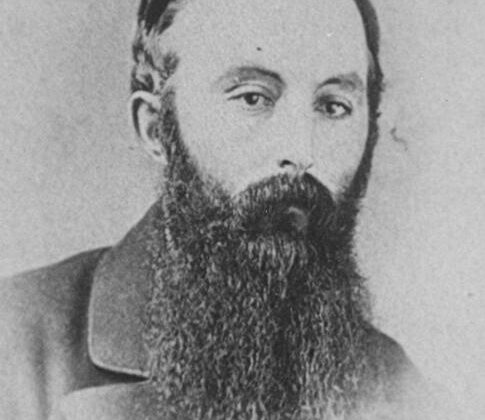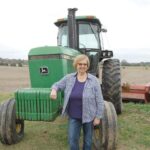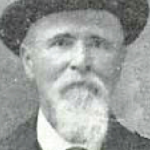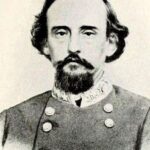
On Sunday June 5, 1864, the Union cavalry division of Brigadier General Benjamin H. Grierson halted at the intersection of the LaGrange and Ripley and Salem and Ruckersville roads, in Tippah County, Miss.
Grierson’s commander, Brigadier General Samuel D. Sturgis, remained with the infantry division and wagon train two miles west of Salem. Grierson noted one of Sturgis’ 250 wagons was carrying “a 10-gallon keg of whiskey.”
Rain continued during the afternoon and the next day. On the 6th, Union infantry and wagons moved another thirteen miles along the Ruckersville road. About noon, Sturgis’ infantry made contact with a small party of Rebels near Mrs. Childers’ residence at the intersection of the Saulsbury to Ripley and Salem to Ruckersville wagon roads. The infantry chased the Southern horsemen south toward Ripley. The infantry went into camp at the crossroads at Mrs. Childers, six miles in rear of the cavalry.
During the afternoon of June 7, the Union cavalry left Ruckersville moving southeast toward Ripley. A short distance north of Ripley, Winslow’s Cavalry were fired upon by a Confederate forage detail from Colonel E. W. Rucker’s Brigade, Forrest’s Cavalry.
Rucker’s men had crossed the Tallahatchie at New Albany earlier in the day, the men keeping their ammunition dry by carrying it on their horses. This detail was commanded by Lieutenant Robert J. Black and composed of men from Company B, 7th Tennessee Cavalry, men from the Mason area of Tipton County. Black’s men fell back through Ripley pursued by the Federals. Two miles south of the town Black’s detail rejoined their Company. The Tennesseans formed a defensive position on the crest of a hill.
Union General Grierson promptly “pushed forward” three companies of the 3rd Iowa Cavalry to attack the company of Rebels.
Unable to drive them, two companies of the 4th Iowa Regiment were sent into the fray. Grierson noted the ensuing skirmish “was quite brisk for nearly two hours.”
This action was the first combat of any consequence during the Tishomingo or Brice’s Crossroads campaign.
Winslow’s Iowans failed to move Rucker’s Rebels. Grierson called up Lieutenant Colonel Thomas M. Browne’s 350 men of the 7th Indiana Cavalry to drive the stubborn Confederates from the hill. Browne reported the only access to the hill was to advance through a low creek bottom along the road and by crossing a bridge and narrow causeway. Ditches and fallen logs were dotted on both sides of the road. Rebel skirmishers were in advance of the wooded hill. It was nearly dark when Browne’s dismounted Hoosiers advanced.
About to be flanked, the men of the 7th Tennessee quietly withdrew. Colonel Rucker had been ordered by General N. B. Forrest “to feel the enemy” but not bring on a general engagement.
Judge J. P. Young’s history of the 7th Tennessee reports Captain James P. Russell’s Company B., “when fired upon, retired under a hill, threw out skirmishers on the top of the ridge under Orderly Sergeant Nat Mason; these men were assailed by the enemy and driven in, Sergeant Mason being killed. Privates J. Peyton Collier and George Brock Sale recovered Mason’s body under a hot fire.”
William Nathaniel “Nat” Mason was a Tipton native, born at Mason in 1836, a son of James Edward Mason (1796-1862), for whom the town of Mason is named. Nat’s brother, Robert and Francis served in Company B, as well.
In the action the Federals had one man killed, three wounded (two captured) and seven horses lost. According to a Federal report, the Rebels left six men dead.
Continued next week.





